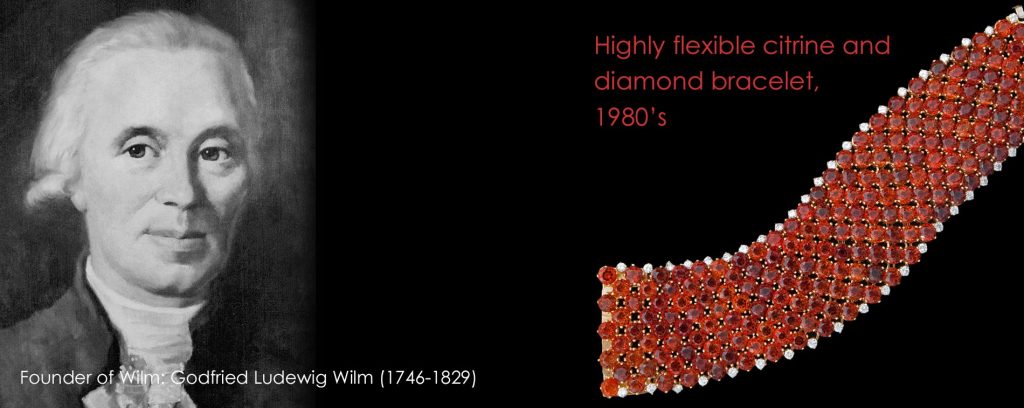Contact details
Marjan Sterk Fine Art Jewellery
Nieuwe Spiegelstraat 63
1017 DD Amsterdam
The Netherlands
Telephone: +31 (0) 20-6248703
info@marjansterk.nl

Wilm, Germany’s oldest jewellery house.
The firm of Wilm calls itself a jewellers dynasty and rightly so. When Fredric the great in 1767 ordered the silversmith Johann Lieberkühn to design a full silver set for him, his eye fell on a design by the apprentice Gottfried Ludewig Wilm. With the money Wilm made from this order he could take the step to setting up on his own in Berlin. His son Heinrich Ludwis Wilm distinguished himself by making a tabaccobox for Napoleon. The third generation; Hermann Julius Wilm was a contemporary to Gustav Faberge and their friendship made dealings with Moscow and St. Petersburg possible. This culminated in the take over of the firm of Paul Telge, at the time supplier to the Romanian and Bulgarian court.
The subsequent Wilms’, Johann Paul and Ferdinand Richard, followed in the footsteps of their predecessors by creating the most beautiful jewellery and objects d’art. It was Ferdinand Richard Wilm who, together with architect Peter Behrens, rediscovered silver as a material for implements and came up with a style specific to silver objects in line with New Objectivity. He was also the one who moved the headquarters of the firm from Berlin to Hamburg after the Second World War.
In 1967, the sixth generation, Johann Renatus Wilm, took over the company and he concentrated in particular on the creation of exclusive jewellery with an emphasis on precious stones. In 1990, under the leadership of the youngest generation, a branch was opened on Germany’s beloved holiday island of Sylt and since 1997 Mark Andreas Wilm has been at the helm of the entire company.
The jewellery by the house of Wilm can often be recognized by the use of precious stones in the most beautiful colors. Large gemstones are not shunned and that often gives the jewellery an exuberant appearance. The combination of the excellent craftsmanship and a typically German sturdiness in the execution results in timeless jewellery.